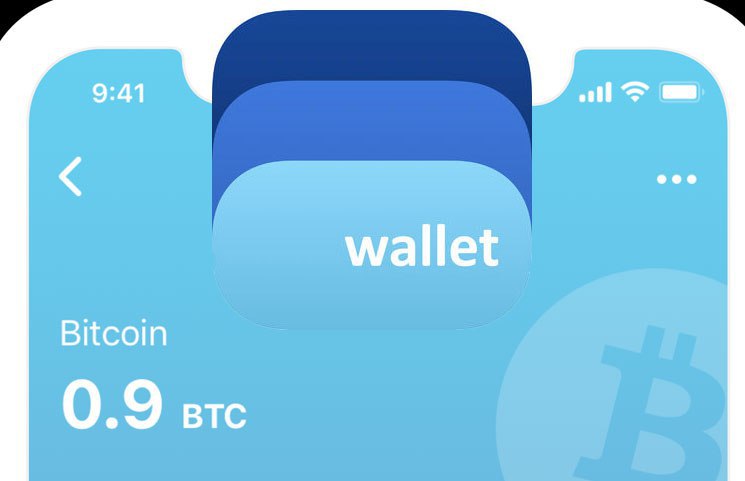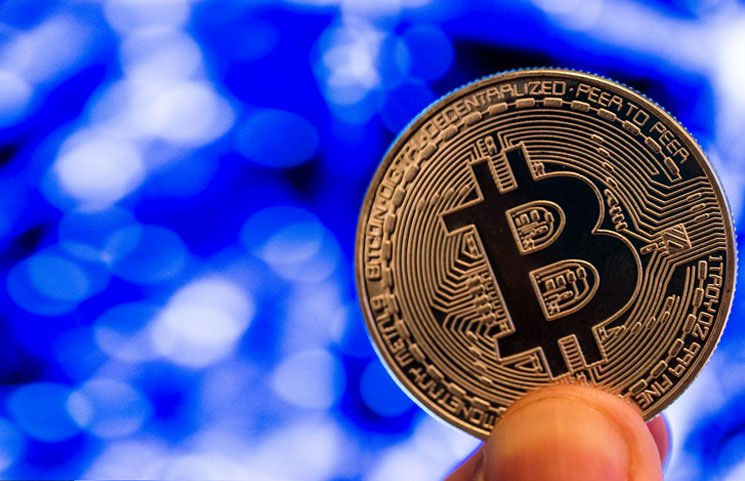Bitcoin News
Bitcoin Payments via Lightning Makes its Way to Apple Watches

Now, you can receive Bitcoin lightning payments on your Apple smartwatch just with a few taps.
Bluewallet, a popular lightning network wallets launched their new app for Apple Watch on Sunday. “The first lightning enabled watch wallet” by Bluewallet allows users to receive Bitcoin over its second-layer payment technology Lightning Network.
Users can use the smartwatch app to generate a QR code that another person can use to scan with their smartphone to send the payment. When it comes to features, the website mentions that it allows to receive payments directly on your watch, access all your wallets from your watch, and see latest transactions from your wallets as well.
It further allows you the option to either use custodial lightning wallets or to run your very own node to provide seamless use of Lightning Network for payments. It means you don’t need to be online, open channels, provide liquidity or operate and maintain a node.
Created by a team of three developers, the focus currently is on minimizing trust as Product and UX engineer Nuno Coelho shared with a media outlet,
“We would also like to move from being a third-party service, minimizing trust. That’s our most important goal at the moment.”
Bluewallet has already shared a sneak peek a few weeks ago and now is officially downloadable from the iTunes store.
However, Coelho did share that it is basically an experiment at this point, “It’s a small experiment we’re doing to put wallets on the watch. The first releases will be simple, allowing you to receive lightning payments.”
Given the fact that smartwatches aren’t as popular as smartphones, it is all experimental at this stage. On the basis of the feedback the team will move forward as in “how to build this stuff properly.”
The idea has been to provide the convenience of receiving Bitcoin with simply two taps from your wrist. Bitcoin on the go is what it is!
Bitcoin News
Divergence: Bitcoin (BTC) Slide, Mining Difficulty Rising

Even if prices are wishy-washy, it appears as if Bitcoin (BTC) network is being bulwarked. More miners are entering as mining difficulty rise.
In 2019, Bitcoin has been recording new levels in both price and mining difficulty. Unfortunately, towards the end of last month, the price of Bitcoin lost its steam to towards the $10K mark. In contrast, the mining difficulty is on the rise and well observed by a keen Twitter user:
“Bitcoin mining difficulty has just hit an all-time high. The network is stronger than ever.”
Bitcoin mining difficulty has just hit an all-time high.
The network is stronger than ever.
🚀🚀🚀 pic.twitter.com/cWgMtQ5xZ3
— Kevin Rooke (@kerooke) May 31, 2019
On May 31, the Bitcoin mining difficulty rose by 11.26 percent to reach a new difficulty level of 7.46T from a previous difficulty of 7.45T. The increase in the mining difficulty was recorded in Token Insight’s report for the first quarter of 2019.
The report titled “Cryptocurrency Mining Industry Quarterly Report,” noted that:
“Difficulty adjustments during the first and second quarter of 2019 are to be expected. The last bull market period of BTC leads to a large remnant of hash power, which is impossible to be multiplied by the capacity of Samsung and TSMC chips. BTC mining has an average network hash rate of 45.76EH/s and a current difficulty of 6.39T, which is expected to exceed its previous record-high of 7.46T, corresponding to an average hash rate of 53.33 EH/s.”
The Hash Rate Will Increase By 50 Percent
Additionally, Token Insight anticipates that the mining hash rate would increase by between 30 and 50 percent by the end of the year.
The mining difficulty can roughly be an indication of increased activities by Bitcoin miners. Consequently, the BTC network may be considered more secure than before since there are more parties to validate transactions. The increase in miner activities on the BTC platform may be influenced by the rise in the price of Bitcoin since the year started. Towards the end of last year, miners were seen as turning off their rigs due to the falling prices.
Unfortunately, although the overall hash rate has increased, it does not indicate an increase in the number of miners. Neither does it suggest that those who had switched off their rigs are back online. Instead, at this point, there are many theories to support the increase in the hash rate hence the rise in mining difficulty.
A New ASIC Is in Use
One of those theories indicates a possibility that a new BTC mining ASIC with a higher hash rate has been deployed. Additionally, some Bitcoin mining pools have recorded an increase in hash rate. For instance, ViaBTC recorded a 50 percent increase in the hash rate.
Despite the increase in hash rate and mining difficulty, unconfirmed transactions are on the rise. At some point on May 31, these transactions reached 25 million. Therefore, those sending and or receiving BTC may wait a little while longer before their accounts are updated.
According to Token Insight:
“By conservative estimation, by the end of 2019, BTC mining hash rates could grow by 30 percent at most to 59EH/s with difficulties rising to 8.31T. In an optimistic estimate, by the end of 2019, BTC mining hash rate could grow by 50 percent at most to 68EH/s with difficulty rising to 9.59T.”
Bitcoin News
Charlie Shrem Thinks That Bitcoin Vs Altcoin Debate Is Misleading

Among the notable millionaires who made their fortunes off cryptocurrency, Charlie Shrem is a polarizing figure. A staunch supporter of bitcoin and the cryptocurrency space, Shrem spent two years in prison for activity related to an unlicensed money-transmitting business. Shrem even announced plans to continue to invest in the cryptocurrency space but to diversify his holdings and transfer his bitcoin profits toward real estate investments. He has also returned to the industry with a number of new projects and ventures.
He recently said that comparing altcoins with Bitcoin is a misleading argument and we have to focus on transaction speeds.
“Transaction speeds” when debating #bitcoin vs other faux-crypto’s is red herring argument. There were plenty of fast ways to move money before bitcoin. That’s not why we’re here. We’re building a censorship resistant value network that can-never be controlled by a single party.
— Charlie Shrem (@CharlieShrem) May 25, 2019
Bitcoin claims that “It is the first decentralized peer-to-peer payment network that is powered by its users with no central authority or middlemen.” Bitcoin has no central control: no central repository of information, no central management, and, crucially, no central point of failure. And yet, most of the actual services and businesses built within the Bitcoin ecosystem are centralized. They are run by specific people, in specific locations, with specific computer systems, and they are susceptible to specific legal entanglements.
As such, most altcoins offer no benefit over Bitcoin at all. Plus, they have less hash power securing them, involve fewer developers improving them and are usually less useful due to smaller network effects. And while many altcoins promise useful features, upon closer inspection, many of these promises are just that: promises.
The altcoin market has been consolidating at a collective market cap at around $100 billion. That, combined with the fact that BTC hit historical resistance at about 60% dominance. The fact that the bulls succumbed to this resistance even after bitcoin’s parabolic run tells us that the index is still bearish. These signals tell us that the Bitcoin Dominance Index has topped off and is likely to correct in the near future. This assumption plays well with our narrative that alt season is not yet over.”
Bitcoin News
Schnorr Signature can help Bitcoin achieve better scalability

The blockchain industry has been backed with a phenomenon technology, one that has been defined to be a revolutionary development that has taken place in the 21st century.
The framework has been able to maintain and also improve the current technology continuously, but it requires to have constant implementations taking place to help eradicate the bugs and properly tackle issues like security and the ability to scale within the community.
Bitcoin Cash went ahead to announce that they will be adding the Schnorr Signatures to the network, this is in the hopes of improving the current security level and be able to accommodate for faster transactions on the platform.
The Director of Research at the Blockstream, Andrew Poelstra, went on to say that with the implementation of the Schnorr Signatures to the Bitcoin platform would go a long way in helping one of the most significant virtual assets create the multi signatures.
The Schnorr Signature will be able to offer several benefits,
Bitcoin has been using the ECDSA; this is because of the SSL Library that was needed during the very early developments of the Bitcoin, it required the open SSL to be used for the core cryptography. Poelstra stated that the Schnorr signature was able to provide the same alternative to the ECDSA when looking at the characteristics and the size.
However, it was able to enable Bitcoin to implement some of the bond protocols in their network.
Some of the significant benefits that we should take note of are the ability to enable users to create multi signatures between groups of people quickly. In this case, the signers can combine a public key into just a single joint key that will be able to represent them all.
If you would like to initiate a transaction all you need to do is an interactive protocol, and from here you produce an original signature, thus, allowing you to move your coins from one wallet to the next.
Poelstra went on to state that if the Schnorr Signature gets implemented, the EDSA will not have to get stripped off, as a network could have both of them.










